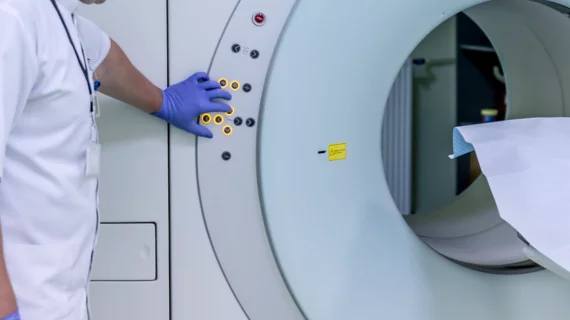Iron-based MRI contrast agent outperforms gadolinium
Neuroscientists have found a way to embed iron into nanoparticles to create an MRI contrast agent that outperforms gadolinium, sharing their research in ACS Nano.
Considering the recent controversies surrounding gadolinium and its potential side effects, lead researcher Naomi Halas, PhD, of Rice University in Houston, thinks the medical imaging industry will be intrigued by her team’s findings.
“The possibility of eliminating gadolinium exposure and getting a two-fold improvement in T1 MRI contrast performance is going to intrigue radiologists,” Halas said in a prepared statement. “When they hear we’ve done this with iron I expect they will be very surprised.”
With help from specialists at the University of Texas MD Anderson Cancer Center, the researchers created nanomatryoshkas, or layered nanoparticles, that can be “tuned” to interact with different wavelengths of light. The team then learned how to add fluorescent dyes to the nanomatryoshkas and even how to embed gadolinium chelates for MRI contrast. That’s when they noticed a shift in what researchers wanted in a contrast agent and changed course.
“In the earlier work with gadolinium, we noticed that the nanomatryoshka design enhanced the relaxivities of the embedded gadolinium chelates,” graduate student Luke Henderson, lead author of the ACS Nano study, said in the same statement. “At the same time, we were hearing more calls from the medical community for alternatives to gadolinium, and we decided to try iron chelates and see if we got the same sort of enhancement.”
The team then found that they could load more iron into each nanomatryoshka, helping it perform better than gadolinium.

